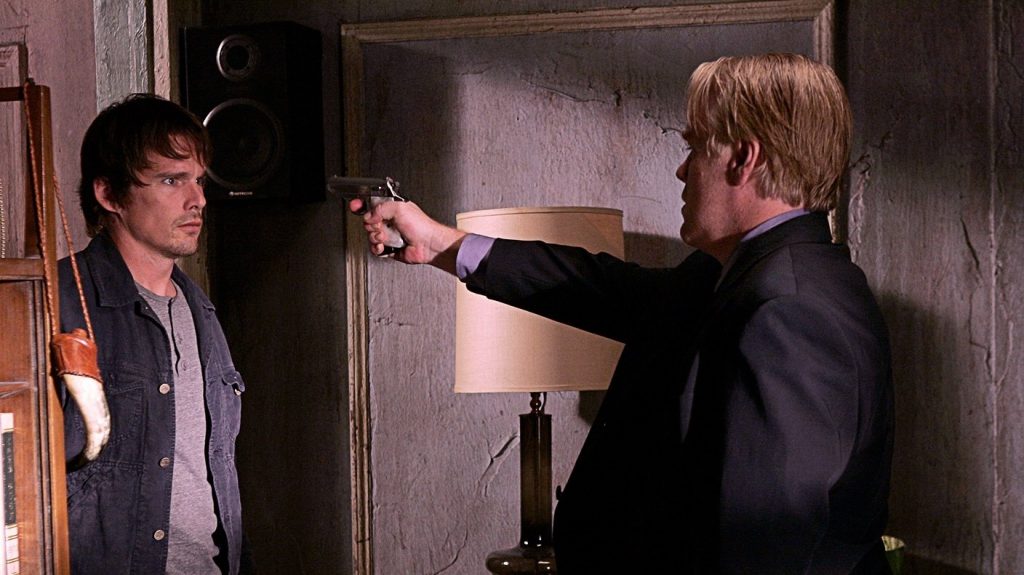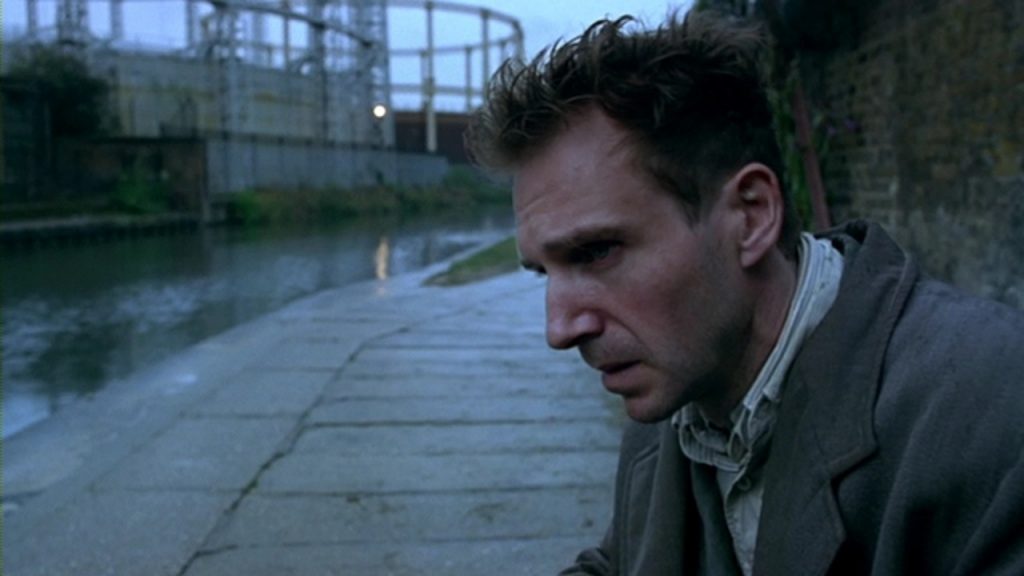Memories and Mysteries: Non-Linear Storytelling in Film, by Tyler Smith
21 Dec
Every dramatic writer understands the vitality of the three-act structure. The importance of rising action, character arcs, obstacles, conflict, and the eventual climax as key elements in effective emotional storytelling cannot be overstated. Many of the most beloved films have strictly adhered to this formula and, in doing so, provided their own arguments for why it has shown itself to be so sturdy over the years. For a writer or a director to attempt to subvert basic storytelling elements like this is to flirt with the potential confusion and alienation of his audience.
And yet there have been many filmmakers over the years that have come to understand the stylistic and emotional potential of unconventional storytelling. At the very least, this can serve the very practical function of forcing the audience to try to more actively engage in the film they’re watching, lest they lose track of the story thread. In reformatting even the most straightforward story, the filmmaker requires the audience to approach what could be very familiar material from a different angle, which can ultimately affect the thematic meaning they take from the film. However, to engage in non-linear storytelling simply for the sake of attempting something different is to run the risk of overcomplicating the story and frustrating the audience. Ultimately, if a filmmaker chooses to abandon more conventional narrative choices – such as the three-act structure and a chronological timeline – he must have a reason beyond simple novelty.
Non-linear storytelling can be one of the most effective ways to add complexity and ambiguity to a film, no matter what genre. Actions with no motivation, effect without cause, punishment with no crime. This can keep an audience on edge, never quite knowing where they are in the story, always wondering if the filmmaker will reveal more or keep it to himself. In some cases, it can create identification with a character, as in a thriller in which the protagonist is out of his depth and trying to figure things out. However, it can also cause a feeling of loneliness and isolation in the audience, as every character on the screen seems to know what’s going on, but the audience is being kept in the dark.
When a story is told in a non-linear fashion, it adds an element of mystery to the proceedings. The audience wonders why something is happening, or how. So it follows that perhaps the genre that benefits most from non-linear storytelling is the Crime Movie. I’ll include film noir, thriller, con artist film, gangster picture, heist movie, and whodunnit into this designation, as they all involve nefarious actions by characters whose key motivation is to obfuscate the facts and hide the truth.
If the audience is put in the position of a detective trying to unravel the mystery, the filmmaker’s choice to tell the story in a non-linear way is akin to questioning a nervous witness with something to hide. He gives a bit of the story, only to go back and add in more details, possibly to enlighten, possibly to confuse. In a criminal case, elements like means and motive are essential. Appropriately, the most intriguing elements in a crime movie is why a character gets involved in illegal actions and how he does it. Many effective crime movies – such as The Maltese Falcon, Heat, Murder on the Orient Express, and Ocean’s Eleven – allow their stories to unfold in a straightforward way, but these films often have as their lead character an anchor of sorts; an unflappable man or woman whose understanding of the situation is already on fairly solid ground from the beginning, and then only deepens as the film continues.
However, many crime movies feature an ensemble of untrustworthy characters willing to lie, cheat, and steal in order to get what they want. There might be some moral compass, but it is minimal. These characters are adrift in a sea of self interest and greed, and the filmmaker often follows suit by allowing the story to unfold in a way that is equally ambiguous and untethered. Films like Steven Soderbergh’s Out of Sight, which follows a number of off-kilter criminals as their separate paths lead them to the same Detroit mansion. Here we have jewel thieves, bank robbers, and murderers, each out for himself. The co-lead in the film is a federal marshal whose professional stability is never in question. However, part of the film’s thrust is the marshal’s physical attraction to one of the criminals and the counterintuitive relationship that begins to unfold between them. Her loyalties are divided between her job and her emotional life; hardly the definition of a reliably solid protagonist that can ground the story firmly in a comprehendible context. As such, the film jumps around in time, as we see the characters interact in a California, then to their antagonistic meeting in Detroit, then to the moment they break out of prison, and so forth. It all adds up to a film attempting to understand how this disparate ensemble of eclectic rogues found each other, and what will happen now that they have.
Another fairly recent example is Sidney Lumet’s final film, Before the Devil Knows You’re Dead, in which two brothers attempt to rob their own parents’ jewelry store. Lumet employs the use of flashbacks and flashforwards, but with an interesting stylistic choice. Just as the story starts to roll forward, there is a jarring visual and aural shift. The action freezes and flashes back and forth with another scene, all to the sound of breaking glass, at which point we are jolted into another scene, sometimes in the past, sometimes in the future. This strikes me as Lumet’s way of keeping the audience on edge and reminding us that there is always more to the story, even if we don’t want to hear it. It is the insistence of the filmmaker that we consider all story elements before we make our judgments on these characters and their abhorrent actions.
Many other crime movies have employed non-linear storytelling devices, often as a way to craft tones of paranoia and aimlessness (likely as a reflection of their characters’ guilt and questionable morality). Such films include Vertigo, Memento, Point Blank, Sin City, Reversal of Fortune, and dozens of others. As long as there are filmmakers really looking to delve into the treacherous moral territory of criminality, there will be creative, unconventional storytelling.
The mystery element, however, doesn’t end at the crime movie. While those films use non-linear storytelling to explore questions of, “What happened?”, there are some that choose to ask, “How did we get here?” These are films that explore their characters’ broken lives and relationships, trying to puzzle out exactly how things could have strayed so far from where they started. Films like Two For The Road, Eternal Sunshine of the Spotless Mind, and Annie Hall jarringly jump back and forth in the history of romantic relationships, juxtaposing their ambitious beginnings with their disheartening endings, all the while mirroring the characters’ confusion about how everything could go so wrong. These films are often deeply uncomfortable, because, just as a relationship between two people doesn’t adhere to a strict story structure, so the retelling should mimic the spontaneous memories – pleasant or otherwise – that are created over years of interaction. The human mind may instinctively think in chronological terms, but that doesn’t stop the flashes of pain or joy from interrupting a train of thought. Like a detective in a crime movie sifts through the facts to try to find the truth, these characters (and audience) sort through a tangle of memories in order to try to make sense of their relationships, so that they can then assess what to do next.
The ability of film to visualize through cinematography, sound, and editing the human thought process can be astounding. While it’s debatable whether any work of art could perfectly capture the frustrating fluidity of conscious thought, a few filmmakers have attempted it, often casting aside any semblance of traditional storytelling in the process. In Spider, director David Cronenberg attempts to get into the mind of a schizophrenic man for whom the past is perpetually asserting itself. Memories flow into dreams, which flow into the current reality. The past is the present to such a degree that it becomes virtually impossible for the audience to differentiate one from the other, effectively putting us in the same horrifying mindset as our deeply troubled main character. Films like Last Year at Marienbad, Inside Llewyn Davis, and Rashomon explore the cyclical nature of recollection, entering into a hazy reality where time has no meaning and straightforward storytelling has no place.
In their desire to capture these intangible elements of human existence and consciousness, it is perhaps appropriate that these directors would employ storytelling methods more casually associated with mysterious and frightening genres. Because, while it can be intensely thrilling to attempt to piece together the details of a horrendous crime, some of the most effective mysteries can be those that we run into every day. The failing marriage, the fear of repeating past mistakes, the unmotivated-yet-unshakeable guilt; these are the mysterious elements that everybody can relate to, even as they try desperately to escape from them. So many of our more sensitive filmmakers have come to understand that the stylized trick of non-linear storytelling can be a very entertaining form of manipulation, but can be much more effective as a means to access the parts of the audience’s psyche that they’d rather not deal with, forcing them to put aside the personal narratives they’ve built for themselves and instead embrace the messy, disorganized story they’ve actually been living their whole lives.






No comments yet